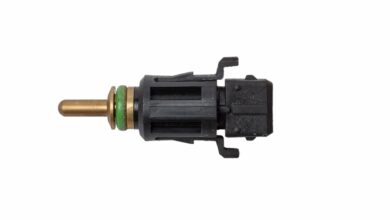Best Tint Places Near Me: Easy Guide for a Cool and Comfy Ride

If you are looking for tint places near me, this blog will help you. Finding good tint places near me can make your car look better and feel cooler. Tinted windows help block sunlight, keep your car cooler, and give you more privacy. Some places even offer special tint that blocks harmful UV rays, which keeps your skin safe and your car seats from fading. Many people don’t know that tinting also helps make driving safer by reducing glare from the sun. In this blog, you will find easy tips to find the right tint shop for your car. I will also share helpful ideas that can make your tint last longer and look better. Whether you are doing it for style or comfort, this guide is here to make your job easy.
Many tint places near me offer different kinds of window tints. Some use light tint, which is good for people who want just a little bit of shade. Others use dark tint, which gives more privacy and blocks more sun. You can also find tint places that give cool extras like colored film or ceramic tint that doesn’t bubble over time. When choosing where to go, it’s smart to check their work photos or ask people you know. A good tint place will explain all the tint types, help you choose the best one, and do the job with care. They will also follow the law because each area has rules on how dark your tint can be. In this blog post, I will share tips on what to look for, how to know if a place is good, and how to take care of your tint after it’s done. Keep reading to find the best tint for your car without stress!
Table of Contents
How to Choose the Best Tint Places Near Me
Choosing the best tint places near me can be easy if you know what to look for. First, check if the place has good reviews online. Happy people usually leave good words and pictures. Look at photos of their work to see if the tint looks smooth and clean. Next, ask how long they’ve been doing tinting. A shop with more years knows how to do a better job. It’s also nice if the workers explain things in a friendly and simple way. See if they give a warranty, so you’re safe if something goes wrong. A clean and neat shop also shows they care. Picking the right place means your car will look good and you’ll feel happy too.
Top Things to Ask at Tint Places Near Me Before You Book
Before booking, it’s smart to ask a few questions at tint places near me. Start by asking, “What kind of tint do you use?” Good tint lasts longer and looks better. Then, ask if they follow local tint laws. It’s important so your car doesn’t get in trouble. You should also ask, “How long will it take?” Some jobs take just one hour, while others take more time. Ask if they offer a warranty in case the tint peels or bubbles. Check how much it will cost so there are no surprises. If you don’t know which tint to choose, ask for help. Good shops will be happy to explain everything. Asking these simple things helps you pick the best tint shop.
What Kinds of Tint You Can Get at Tint Places Near Me
There are many types of tint you can find at tint places near me. One kind is dyed tint. It’s good for blocking sunlight and is not too costly. Another kind is metal tint. It’s strong and shiny but may block phone signals. Ceramic tint is a top choice. It blocks heat and UV rays and doesn’t fade. Some shops also have colored tints for a fun look. Light tints let more light in, while dark tints block more sun and give more privacy. Some places use film that doesn’t bubble and stays nice for a long time. Each kind has a different price and look, so it’s fun to choose what fits you best.
Are Tint Places Near Me Safe and Legal? Here’s What to Know
Many people ask if tint places near me are safe and follow the law. The answer is yes—good tint shops know the rules for car windows. Each city or state has rules about how dark your tint can be. If it’s too dark, you could get a fine. That’s why it’s smart to pick a shop that follows the law. Safe shops also use strong film that doesn’t hurt your windows. They wear clean gloves and use soft tools. Ask the shop if they know your area’s laws. A good shop will say “yes” and explain. Choosing a legal and safe tint shop helps you avoid problems and keeps your car looking nice.
Best Tips to Keep Your Car Tint Looking New
After getting your windows tinted, you should take good care of them. Here are some tips to keep your tint looking fresh and clean. First, wait a few days before rolling down the windows. This gives the tint time to stick well. Clean your windows with soft cloths and no strong soap. Use gentle spray made for tinted windows. Don’t use sharp things or hard paper towels because they can scratch the tint. Keep your car out of the hot sun if you can. That helps the tint last longer. If you see bubbles or peeling, go back to the tint shop. Good care makes your tint last many years and keeps it looking new.
How Tint Places Near Me Make Driving More Comfortable
Tint places near me help make driving better in many ways. Window tint keeps the sun out, so your car feels cool even on hot days. It also stops bright sun from hurting your eyes when you drive. Tinted windows give you privacy too, so people can’t see inside your car easily. Some tint blocks UV rays that can hurt your skin and make your seats fade. This helps your car stay in good shape longer. You will feel more relaxed and happy while driving when the sun isn’t shining too much in your face. So, tinting your car can make every ride feel more comfy and safe.
Conclusion
Tint places near me can help make your car look nice and feel cooler. When you choose a good place, they do the job right, follow the rules, and use strong tint that lasts. It helps you stay safe from bright sun and keeps your car cool and comfy.
Picking the right tint place is easy if you know what to ask and what to look for. Clean work, happy people, and helpful answers are signs of a good shop. Now you know how tinting can help and how to care for it too. Your car is ready to shine!
FAQs
Q: How long does car tinting take at tint places near me?
A: Most tinting jobs take 1 to 3 hours, depending on how many windows you have.
Q: Is window tinting legal everywhere?
A: Yes, but each place has different rules. Good tint shops will follow your local laws.
Q: Can I wash my car right after tinting?
A: No, wait at least 3 to 5 days before washing to keep the tint from peeling.



